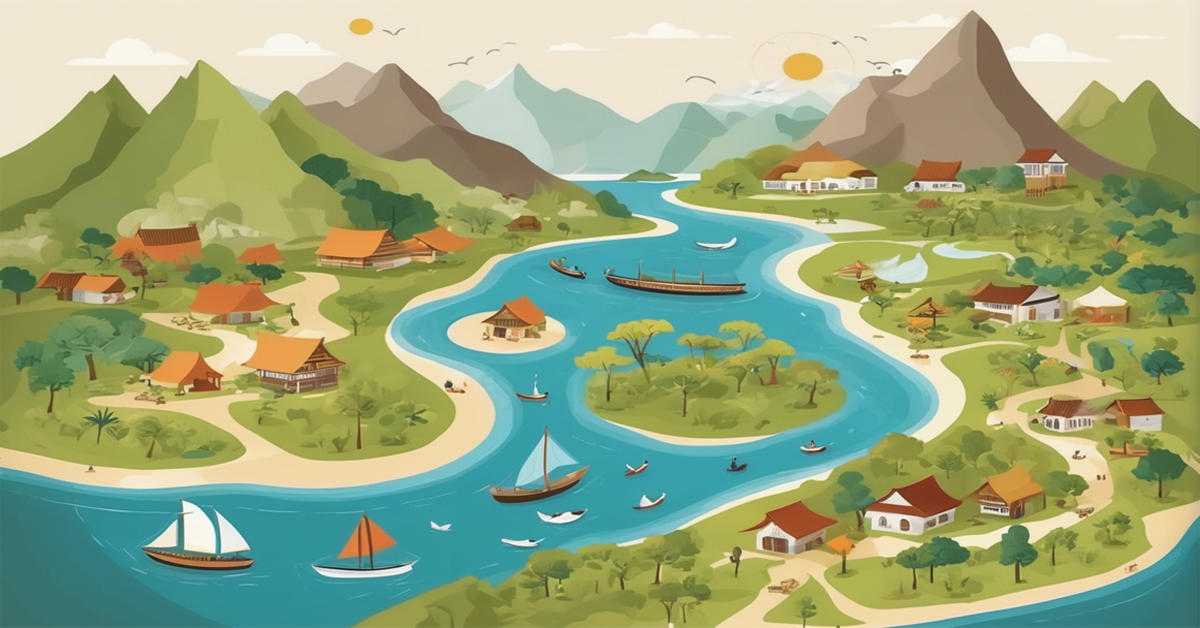The Role of Maps in Sustainable and Responsible Tourism
In the realm of travel and tourism, maps play a vital role in promoting sustainable and responsible travel practices. Sustainable tourism, often referred to as eco-tourism or responsible tourism, focuses on minimizing the negative impacts of travel on the environment and local communities while maximizing the benefits and opportunities for all stakeholders involved.
Maps, whether in digital or physical form, are powerful tools that can be harnessed to guide travelers towards more sustainable choices and experiences.
Types of Maps Used in Responsible Tourism
Digital Maps and Apps
The advent of digital maps and travel apps has revolutionized how tourists navigate new destinations. Apps like Google Maps, Maps.me, and specialized eco-tourism apps offer real-time updates, detailed route planning, and information on sustainable travel options. These tools can guide tourists to eco-friendly accommodations, green restaurants, and local attractions that prioritize sustainability.
Traditional Paper Maps
Despite the digital age, traditional paper maps remain invaluable, especially in remote areas where digital connectivity may be limited. These maps often include detailed topographical information, hiking trails, and local landmarks that digital maps might overlook. Paper maps also reduce the reliance on electronic devices, which aligns with the principles of sustainable travel.
Custom Maps for Eco-Tourism
Custom maps designed specifically for eco-tourism are becoming increasingly popular. These maps highlight environmentally significant areas, conservation sites, and sustainable tourism initiatives. They provide valuable information on how to enjoy these areas responsibly, ensuring that tourists do not inadvertently harm delicate ecosystems
The Importance of Maps in Sustainable Tourism
Highlighting eco-friendly routes and attractions
One of the key ways in which maps promote sustainability in tourism is by highlighting eco-friendly routes and attractions. By providing visual representation of eco-friendly options, such as national parks e.g. Yellowstone, Grand Canyon, Great smoky Mountain, Yosemite etc. sustainable hotels, organic farms, and hiking trails, maps can nudge travelers towards making more environmentally conscious decisions. For instance, a map that showcases bike paths or walking trails can encourage visitors to opt for non-motorized forms of transportation, thereby reducing carbon emissions and minimizing the ecological footprint of their trip.
Raise awareness on environmental and cultural sites
Maps can also raise awareness about important environmental and cultural sites that require preservation and protection. By including information about endangered species habitats, marine conservation areas, or indigenous communities, maps can educate travelers about the significance of these locations and the need to respect and support their preservation efforts. This knowledge can foster a deeper sense of respect and appreciation for the destinations visited, encouraging travelers to engage in sustainable behaviors and practices.
Promote responsible tourism
Maps can help promote responsible tourism by offering information on local customs, traditions, and regulations. By including cultural heritage sites, traditional markets, and community-based tourism initiatives, maps can guide travelers towards authentic and respectful experiences that support the livelihoods of local residents. This can help mitigate the negative impacts of tourism, such as cultural commodification and exploitation, while fostering mutual understanding and appreciation between visitors and host communities.
Facilitate collaboration and partnerships among stakeholders
Furthermore, maps can facilitate collaboration and partnerships among stakeholders in the tourism industry to promote sustainability. By highlighting sustainable businesses, green certifications, and responsible tourism initiatives on a map, travelers can easily identify and support companies and organizations that prioritize environmental and social responsibility. This not only incentivizes businesses to adopt sustainable practices but also creates a market demand for eco-friendly products and services, driving the overall shift towards a more sustainable tourism industry.
Case Studies: Maps in Action
The Camino de Santiago
The Camino de Santiago, a famous pilgrimage route in Spain, is a prime example of how maps facilitate sustainable tourism. Detailed maps of the Camino guide pilgrims through rural areas, supporting small communities along the way. These maps also provide information on eco-friendly accommodations and services, ensuring that the influx of pilgrims benefits local economies sustainably.
The Great Himalayan Trail
The Great Himalayan Trail in Nepal offers another example. This extensive network of trekking routes is mapped in detail to promote sustainable tourism. The maps guide trekkers through diverse landscapes, encouraging them to explore lesser-known regions and support remote communities. They also provide information on sustainable practices, helping to preserve the pristine environment of the Himalayas.
Best Practices for Using Maps in Sustainable Tourism
Choosing the Right Map
Travelers should select maps that are updated and designed with sustainability in mind. Digital maps should offer offline capabilities to reduce the need for constant connectivity, and paper maps should be printed on recycled materials whenever possible.
Supporting Local Mapmakers
Purchasing maps from local mapmakers supports the local economy and often provides more accurate and detailed information than generic, mass-produced maps. Local mapmakers have a deep understanding of the area and can include valuable insights and lesser-known details.
Following Map Guidelines
Tourists should adhere to guidelines and recommendations provided on maps. This includes staying on designated paths, respecting private property, and following environmental guidelines to minimize impact. Responsible use of maps ensures that destinations remain unspoiled for future visitors.
Conclusion
In conclusion, maps play a crucial role in promoting sustainable and responsible tourism by guiding travelers towards eco-friendly routes and attractions, raising awareness about environmental and cultural conservation efforts, providing information on local customs and regulations, and fostering collaboration among stakeholders in the tourism sector. By harnessing the power of maps to support sustainable practices and experiences, we can minimize the negative impacts of tourism on the planet and its people while maximizing the benefits for all involved. Ultimately, integrating sustainability into tourism mapping can help create a more ethical, inclusive, and environmentally conscious travel industry for the future.





